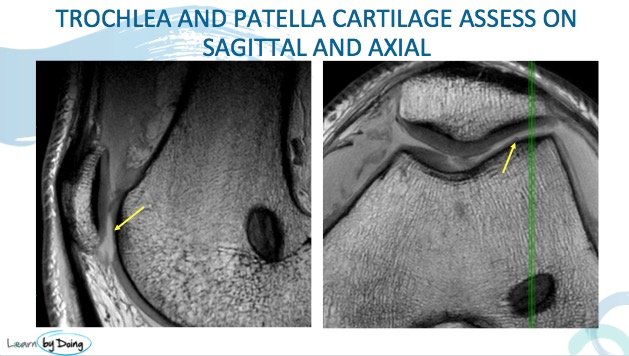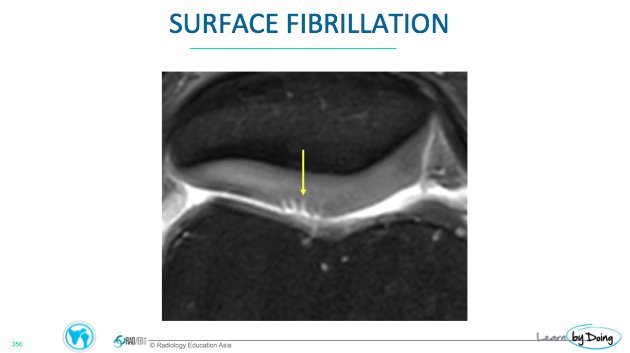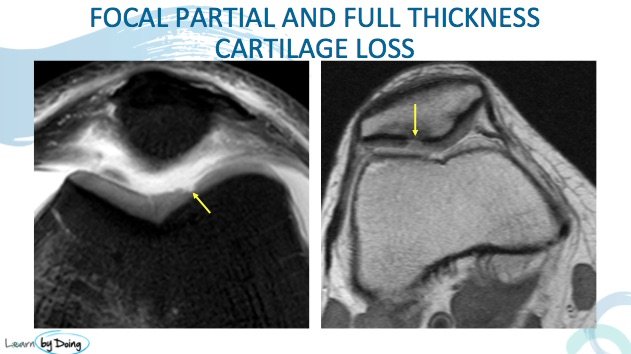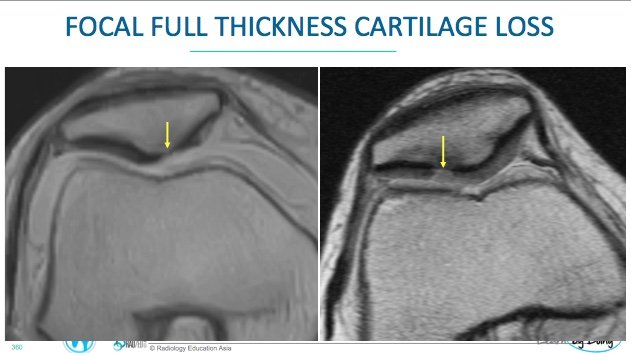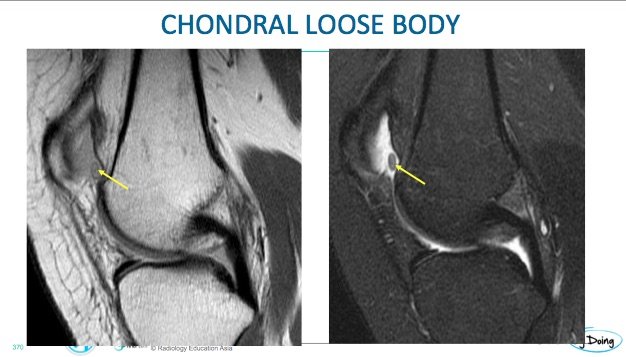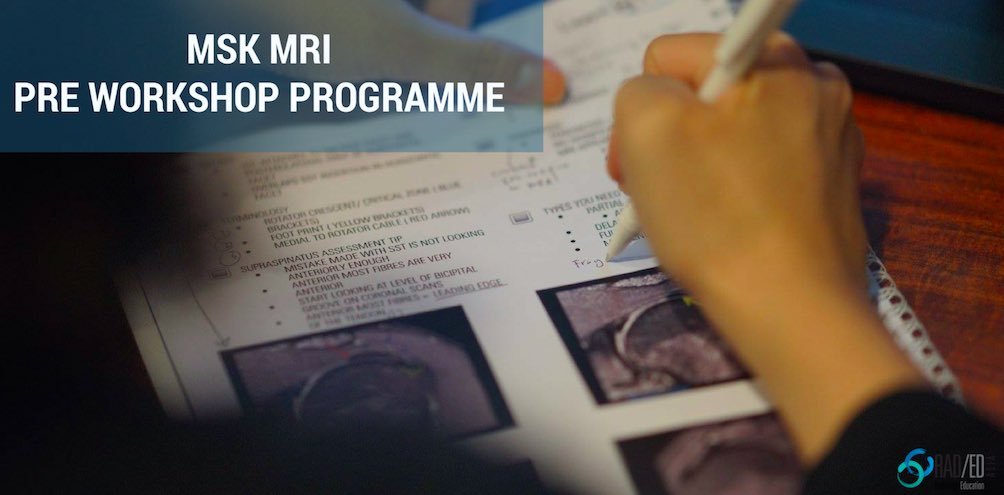
MRI Cartilage
Assessing cartilage on MRI can vary from simple to very complicated. Review of the standard features of cartilage damage in day to day assessment.
SEQUENCES:
On a 1.5T or 3T MRI, cartilage is best assessed on PD sequences. There is no need to do a volume FLASH or similar volume sequence as it doesnt add any more information and takes extra time. If you are using a lower field strength magnet, you need to run both the PD and volume sequences initially to see which one shows cartilage better and then use that for future scans.
PLANES TO ASSESS:
Assess cartilage in all planes. The trochlea and patella cartilage can be more difficult to assess on the axial plane where they curve away from the true axial plane. Look at the sagittal scans to assess these areas.
TYPES OF ABNORMALITIES:
FIBRILLATION AND FISSURING:
FOCAL CARTILAGE LOSS:
Wider than a fissure which is a thin line of cartilage loss. Can be partial or full thickness. Give measurements of width and depth.
GENERALISED THINNING AND FULL THICKNESS CARTILAGE LOSS:
 Image Above: Red arrow generalised severe thinning of cartilage . Yellow arrows full thickness cartilage loss.
Image Above: Red arrow generalised severe thinning of cartilage . Yellow arrows full thickness cartilage loss.
LOOSE BODIES:
Dont forget to look for cartilage loose bodies. Usually they will have a similar appearance to normal cartilage.

